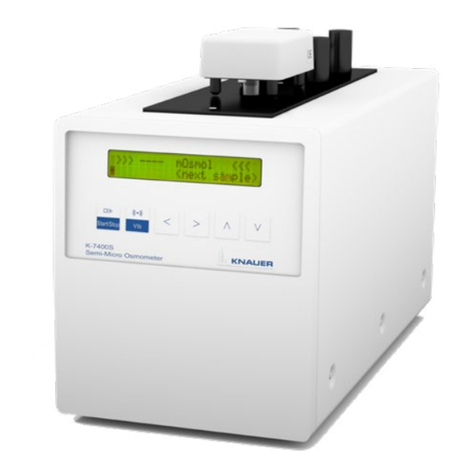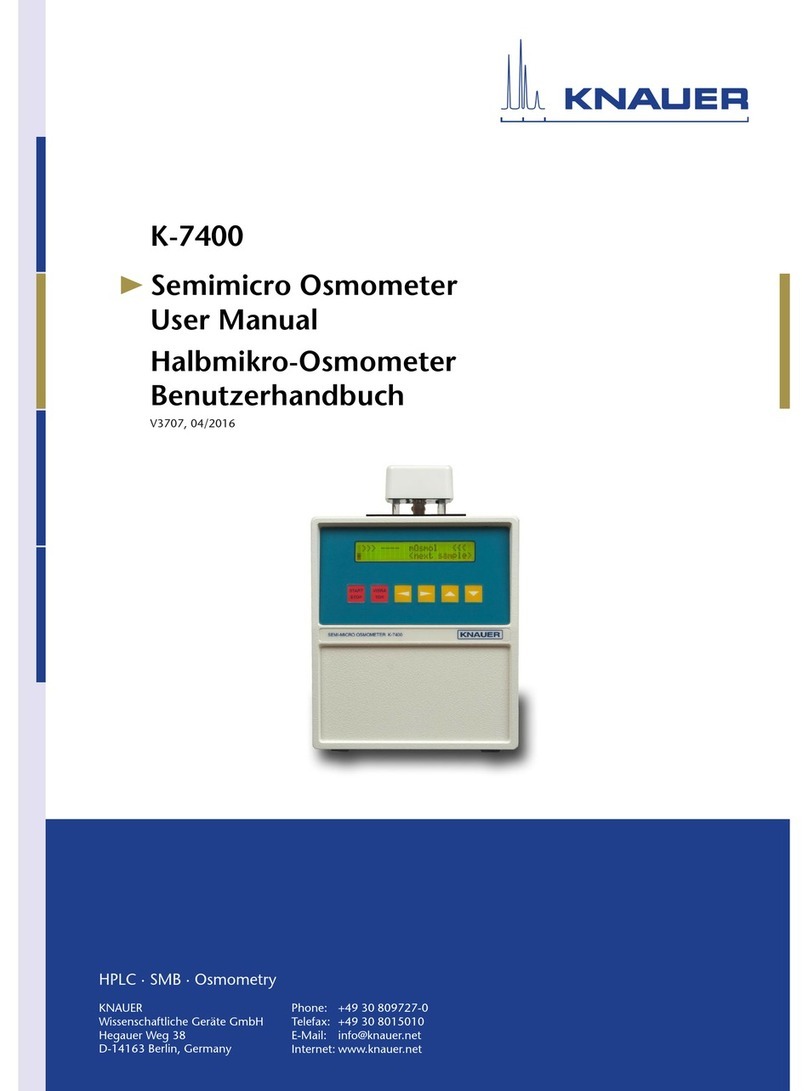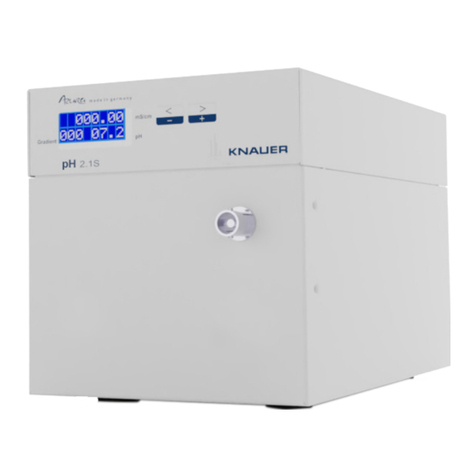3
RS 232 Serial Interfaces .............................................................. 25
The KNAUER Net ........................................................................ 26
List of display messages.........................................................................26
Software Control of the K–2600 UV detector......................................... 26
Preparing for Software Control.......................................................... 27
Installing the KNAUER Net .......................................................... 27
Configuring the KNAUER Net...................................................... 27
Simple Maintenance ............................................................................... 28
Control of the lamp´s functionality..................................................... 28
Changing the lamp ............................................................................ 28
Cleaning the flow cell......................................................................... 28
Analytical flow cells ...................................................................... 29
Preparative flow cells ................................................................... 29
Adjusting the path length of the preparative flow cells ..................... 30
Flow cells with fiber optical connectors............................................. 30
Spare parts and accessories .................................................................. 31
Standard delivery............................................................................... 31
Spare Parts ........................................................................................ 31
Available Flow cells for your K–2600 UV detector ........................... 32
Analytical Cells ............................................................................. 32
Preparative Cells .......................................................................... 32
U-Z ViewMikro-Durchflusszellen / CE Zellen .......................... 32
Spare parts for flow cells ................................................................... 32
Analytical Cells ............................................................................. 32
Preparative Cells .......................................................................... 32
Technical Data ........................................................................................ 33
Declaration of conformity ........................................................................ 34
Guarantee statement .............................................................................. 35
INHALT
Hinweise zum Gebrauch des Handbuchs............................................. 37
Konventionen in diesem Handbuch .................................................. 37
SOP´s in diesem Handbuch.............................................................. 37
Allgemeine Beschreibung....................................................................... 38
Prinzipbeschreibung des K-2600 UV-Detektors .................................... 39
Optischer Weg im K-2600 UV-Detektor............................................ 39
Inbetriebnahme des K-2600 UV Detektors ............................................ 39
Auspacken ......................................................................................... 39
Stromversorgung, Ein/Aus, Autotest................................................. 39
Installation der Messzelle .................................................................. 40
Steuerelemente....................................................................................... 41
Frontansicht des K-2600 UV Detektors ............................................ 41
Funktion der Folientastatur................................................................ 41
Pfeiltasten ..................................................................................... 41
Nummerische Tasten................................................................... 41
AUTOZERO ................................................................................. 41
SCAN............................................................................................ 41
Rückansicht des Photometers .......................................................... 42
Betrieb des Photometers ........................................................................ 42
Display und Menüstruktur.................................................................. 42
Hauptmenü / Arbeitsbildschirm ......................................................... 43
Cursorerscheinung und Dateneingabe............................................. 43
Das SETUP Menü........................................................................ 43
Das GLP Menü............................................................................. 47
































